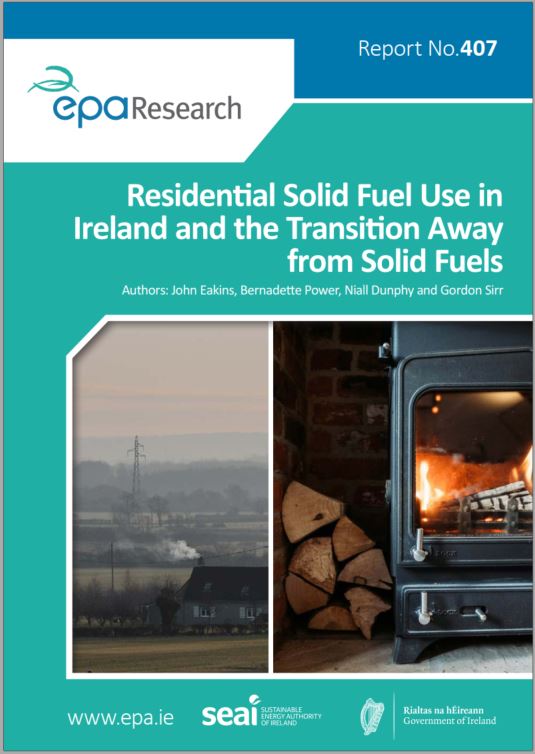
Authors: John Eakins, Bernadette Power, Niall Dunphy and Gordon Sirr, April 2022
Year: 2022
The EPA has highlighted air quality issues in urban centres in Ireland in recent years. Emissions of fine particulate matter (PM2.5), attributable to the burning of solid fuels, such as coal, peat and wood, are a particular cause of concern. This research project aims to provide a deeper understanding of the sector using existing and new sources of data on solid fuel use. The development of a new data set based on a survey of household heating and fuel use will be the primary contribution.
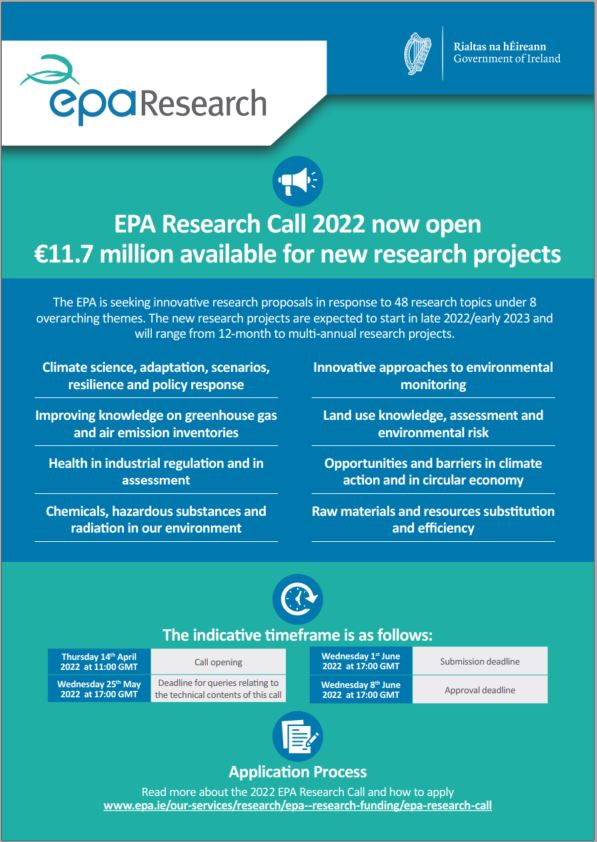
Year: 2022
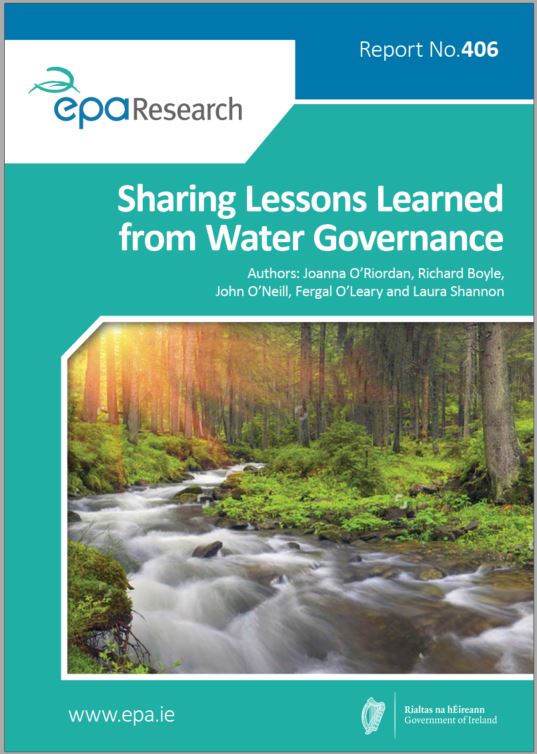
Authors: Joanna O’Riordan, Richard Boyle, John O’Neill, Fergal O’Leary and Laura Shannon, March 2022
Year: 2022
Clean, healthy water is essential for our economy, our aquatic wildlife and our health and wellbeing. However, as noted in the draft third-cycle River Basin Management Plan (Department of Housing, Local Government and Heritage, 2021), there are mounting environmental pressures on Ireland’s waters with the situation described as ‘’urgent’’. The objective of this research was to review changes in structures and processes made under the second-cycle River Basin Management Plan, 2018–2021, to inform thinking regarding the third-cycle River Basin Management Plan, 2022–2027.
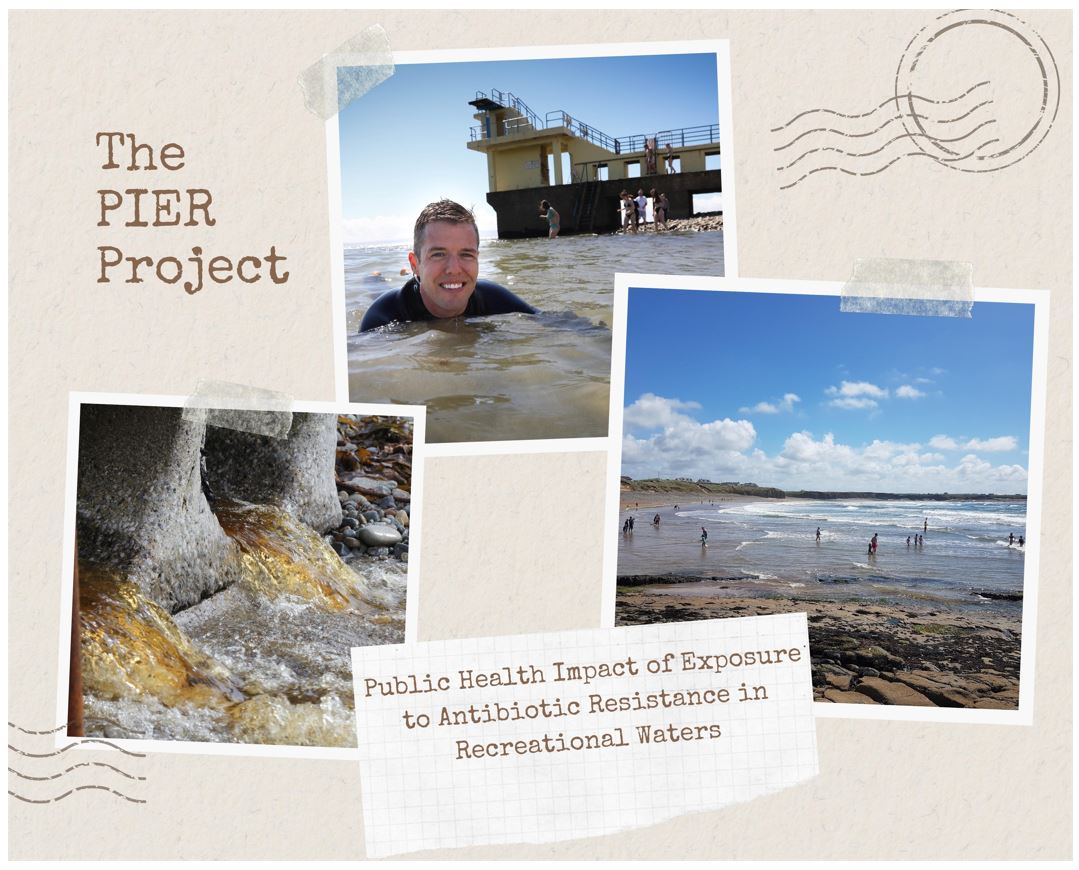
Winner of the EPA Researchers Awards 2021 Best Photograph, March 2022
Year: 2022
Overall Collage- Alexandra Chueiri, Pollution Photo- Blathnaid Mahon, Swimmer Photo- Aengus McMahon d. Beach Photo- Liam Burke
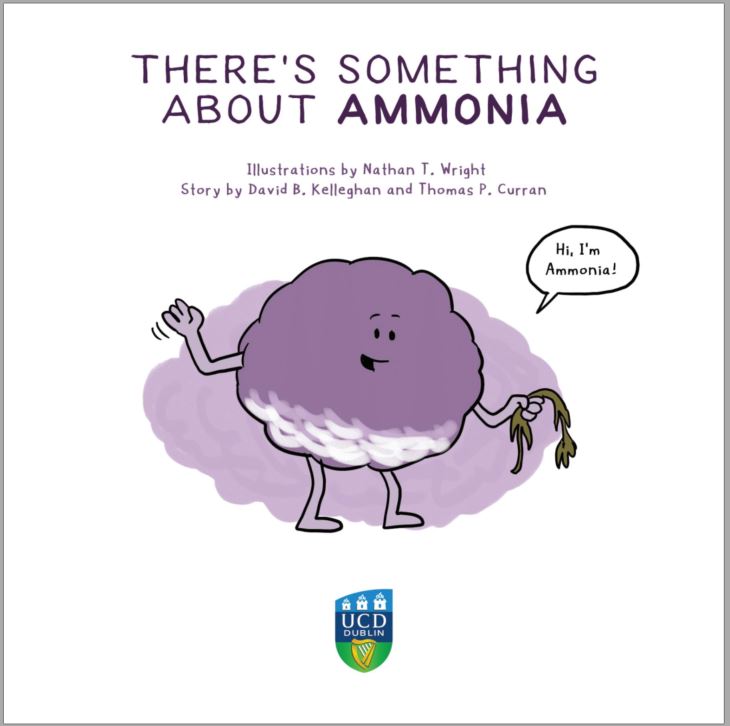
Winner of the EPA Researchers Awards 2021 Best Infographic, March 2022
Year: 2022
Illustrations by Nathan T. Wright. Story by David B. Kelleghan and Thomas P. Curran. This is an output produced by UCD, arising from the EPA-funded research project "Assessment of the Impact of Ammonia Emissions from Intensive Agriculture Installations on Special Areas of Conservation and Special Protection Areas" under the EPA Research Programme 2014-2020. Translated into 16 languages by COST-Action program and numerous volunteers.
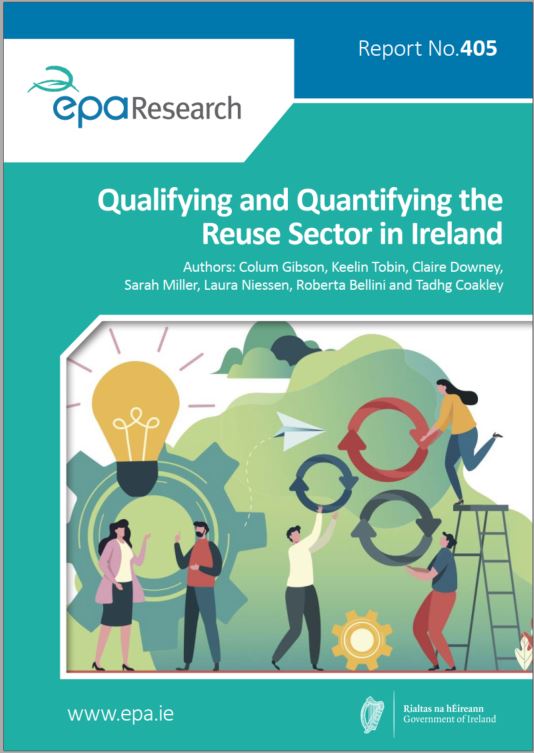
Authors: Colum Gibson, Keelin Tobin, Claire Downey, Sarah Miller, Laura Niessen, Roberta Bellini and Tadhg Coakley, March 2022
Year: 2022
Recent EU legislation aims to strengthen reuse in all Member States and asks Member States to measure reuse, with the option of setting national targets in the future. By gathering information on the scale and size of the reuse sector in Ireland, we can benchmark and compare our reuse sector against others. This study assessed the capability of the Irish reuse sector to supply the data necessary for quantifying the extent of reuse in Ireland and informing Irish policymakers on the steps required to support the sector to report in the future.
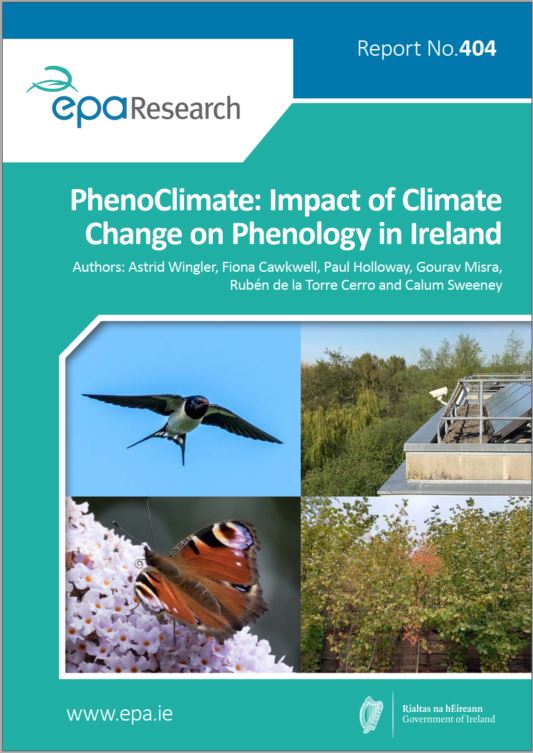
Authors: Astrid Wingler, Fiona Cawkwell, Paul Holloway, Gourav Misra, Rubén de la Torre Cerro and Calum Sweeney, March 2022
Year: 2022
The PhenoClimate project determined the impact of climate change on seasonal life cycle (phenological) events and the consequences for species interactions. For Irish woodlands, an advance of the growing season in spring was identified using satellite remote sensing. Arrival of migratory birds was found to advance too, however, instances in which migratory birds showed asynchrony with insect first flight dates were identified, suggesting that climate change can result in phenological mismatch.
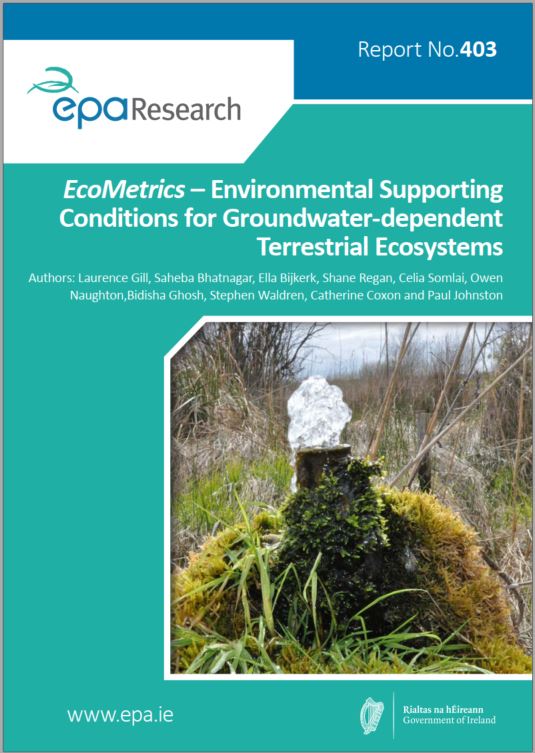
Authors: Laurence Gill, Saheba Bhatnagar, Ella Bijkerk, Shane Regan, Celia Somlai, Owen Naughton, Bidisha Ghosh, Stephen Waldren, Catherine Coxon and Paul Johnston, February 2022
Year: 2022
Wetlands provide important regulating ecosystem services, such as water purification, carbon capture and storage, and flood protection. They also provide rich habitats for biodiversity, including many protected species. This research project evaluated and developed methods for the assessment and definition of appropriate ecohydrological metrics to help policymakers conserve and/or restore wetlands, particularly with respect to meeting the objectives of the Water Framework Directive and Habitats Directive as applied to GWDTEs in Ireland.
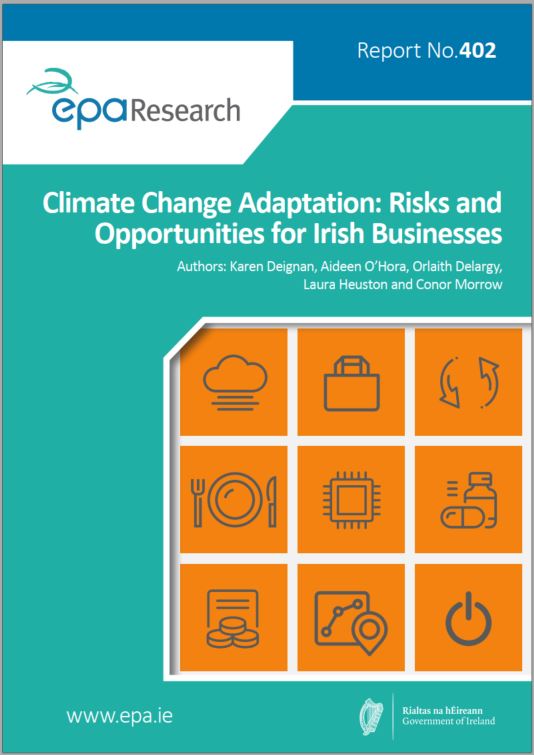
Authors: Karen Deignan, Aideen O’Hora, Orlaith Delargy, Laura Heuston and Conor Morrow, February 2022
Year: 2022
Climate change is already affecting Irish businesses and these impacts are likely to increase in severity. Our research identified material climate risks (pressures) for Ireland’s private sector. By raising awareness of climate risks and opportunities, this research can help the private sector identify and develop solutions to address the environmental and economic challenges that they face. This project can also inform the development of solutions to develop business-level (rather than sector-level) resilience and adaptation plans.
Year: 2022
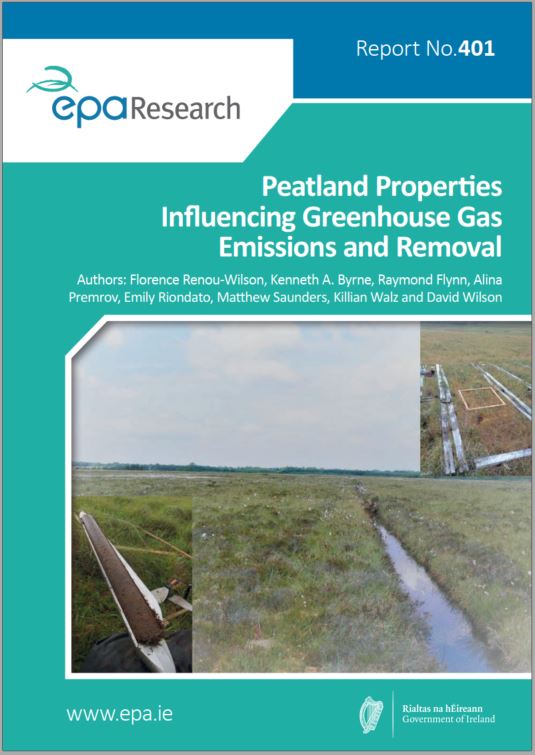
Authors: Florence Renou-Wilson, Kenneth A. Byrne, Raymond Flynn, Alina Premrov, Emily Riondato, Matthew Saunders, Killian Walz and David Wilson, January 2022
Year: 2022
Irish bogs have been drastically altered by human activities and the sampled peat properties reflect the nature and magnitude of the impact of land use and management. A recognition of the heterogeneity found across Irish peat soils, together with an understanding of the relationships between key soil properties, are critical for developing effective strategies to reduce the carbon footprint of these degraded ecosystems. Our findings clearly support the need for a site-by-site approach for rewetting management schemes.
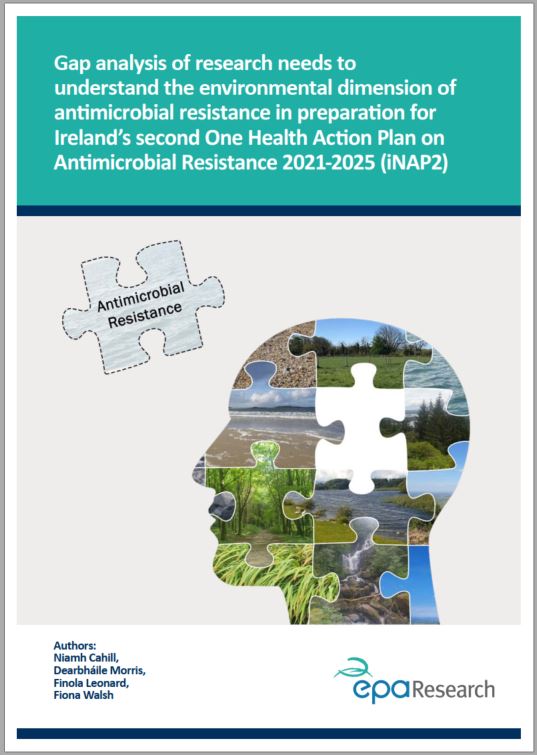
Authors: Niamh Cahill, Dearbháile Morris, Finola Leonard, Fiona Walsh, December 2021
Year: 2021
Antimicrobial resistance (AMR) is one of the greatest global threats we are facing in today’s world. As recognised in Ireland’s first National Action Plan on Antimicrobial Resistance, adopting a One Health approach is key to effectively tackling the problem of AMR. A comprehensive analysis of previous and ongoing research relating to the occurrence, risk, fate and transport of antimicrobial residues and AMR to and within the environment was completed.
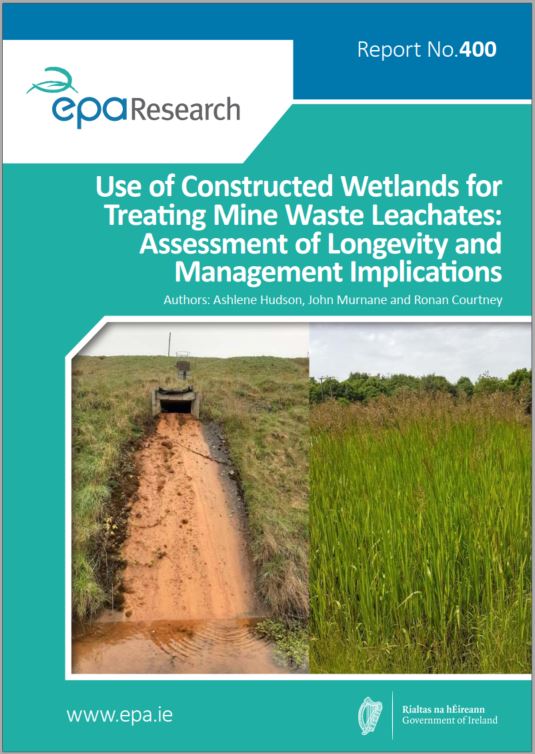
Authors: Ashlene Hudson, John Murnane and Ronan Courtney, December 2021
Year: 2021
Mine waste storage facilities can generate significant quantities of wastewaters and leachates with extreme pH and elevated metal contents. Modern mine waste (tailings) facilities operating under licence from the EPA have constructed wetlands as a component of their Integrated Pollution Control (IPC) licences. This study provides evidence of the effectiveness of constructed wetlands for treating mine waters from different settings over time frames of several years.
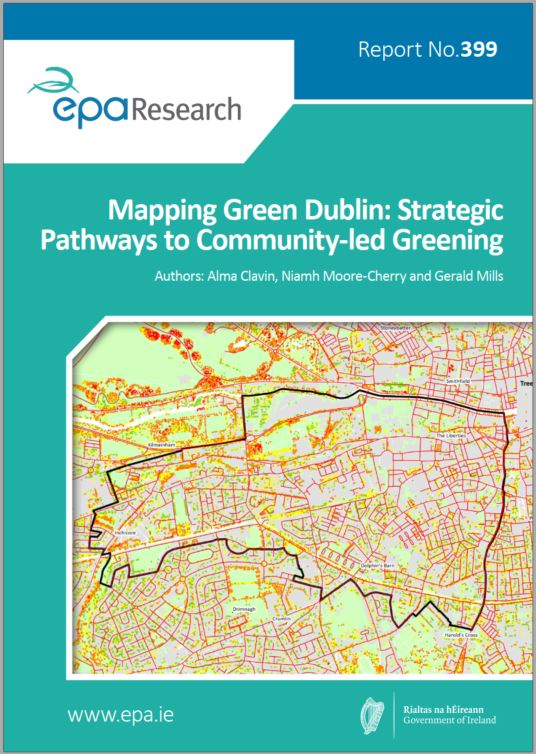
Authors: Alma Clavin, Niamh Moore-Cherry and Gerald Mills, December 2021
Year: 2021
Enhancing green infrastructure in densely populated centres is an important means of improving urban environments, with benefits for air and water quality, as well as biodiversity enhancement. The project Mapping Green Dublin examined the variable green cover in the Dublin City Council area. It has generated data on the city’s trees, identified those places with significant environmental deficiencies and worked with the local community to develop a greening strategy for the Dublin 8 area. Mapping Green Dublin has established a process for effective engagement with neighbourhoods that allows residents to be participants in the design of their own spaces.
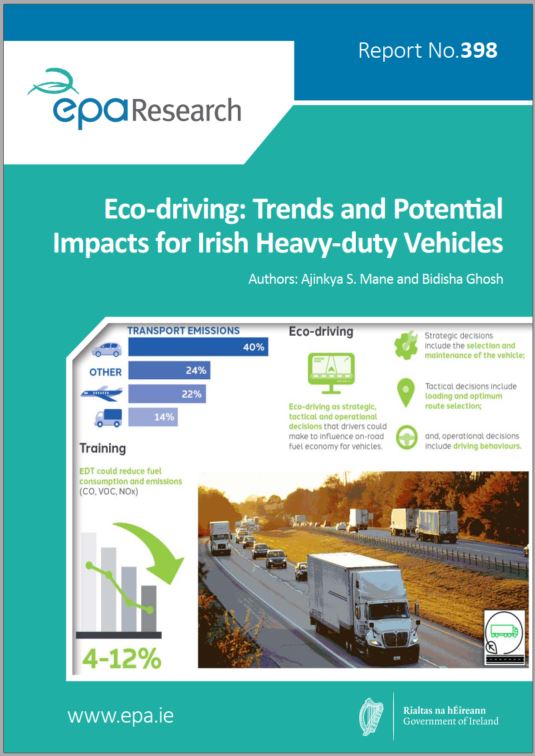
Authors: Ajinkya S. Mane and Bidisha Ghosh, December 2021
Year: 2021
The “Eco-HDV” research project evaluated the impacts of adaptation of eco-driving programmes in the Irish heavy-duty vehicle fleet, focusing especially on the freight sector. The research identified perceptions and awareness of eco-driving training, reviewed the best eco-driving practices and analysed the possibilities of adaptation of eco-driving programmes. The project generated guidelines for the implementation of eco-driving programmes and other measures to reduce vehicular emissions from the Irish heavy-duty vehicle fleet.
Year: 2021
Guidelines on the Preparation of Evidence Synthesis Reports
Year: 2021
This template should be used for the preparation of EPA Research Evidence Synthesis Reports.